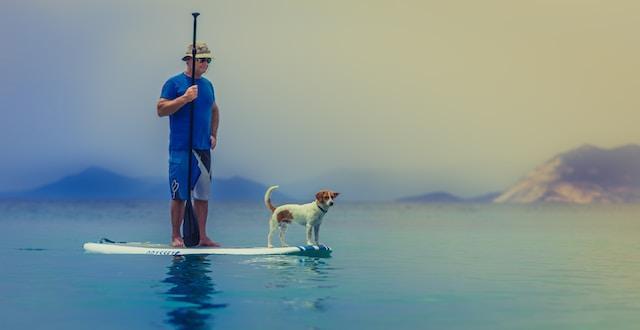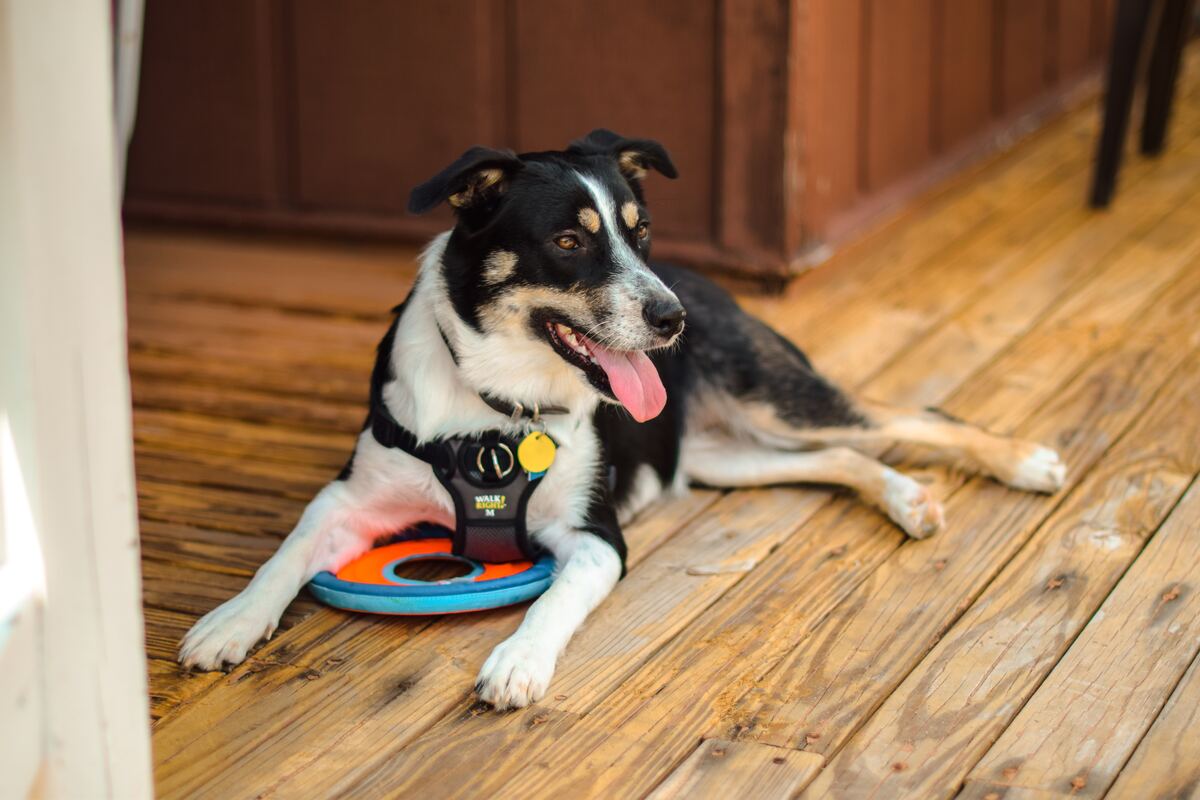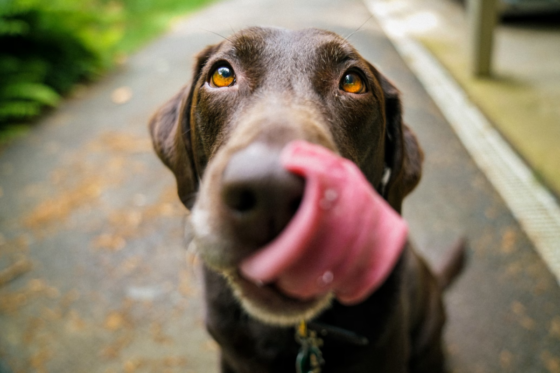Water-loving dogs are naturally drawn to any form of activity that allows them to splash and swim. While the notion of a dip in the pool or a day at the beach may sound appealing to most, did you know that your pet can join in the fun too? Dogs of all breeds and sizes can engage in a variety of water activities, and there’s no time like the present to explore these diverse and entertaining options.
However, safety is always paramount with dogs. In this blog post, we’ll dive – quite literally – into the exciting world of water activities. Not only do they provide a refreshing retreat from the heat, but participating in these activities also offers a platform for valuable bonding time and an excellent form of exercise. Also, we’ll touch on the necessary safety precautions for each activity, such as using a dog-proof flotation device, secure aqua shoes for owners, and making sure to keep fresh water readily available for drinking.
Essential Items for Water Activities
A fun-filled day can quickly turn into an unwanted situation if you fail to carry essentials for your comfort and safety during the adventure. From the necessary safety equipment to items enhancing pleasure and convenience, there are a few important things you should pack, including aqua shoes for yourself.
Aqua Shoes for Dog Owners
While we often focus on canine safety, we should not overlook the owner’s safety and comfort. Here is where aqua shoes, such as the ones found at https://threo.nz/product/barefoot-aqua-shoes, prove their value. Whether you’re wading through shallow bays, walking along the rocky river bed, or trying to maintain balance on a paddleboard, swimming shoes ensure your feet are protected from sharp objects and slippery surfaces. They provide excellent grip and support, so you can confidently steer or run after your furry friends without fearing injuries.
Some of the best options include waterproof, slip-resistant, and quick-drying water shoes, ensuring you enjoy these activities to the fullest. By protecting your feet and giving them the right support, these shoes enable you to engage in water adventures fully without getting sidetracked by discomfort or potential hazards.
Canine Safety Gear
For your dog’s safety, a well-fitted life jacket is an absolute must. It should be comfortable, buoyant, and have a grab handle that allows you to help your pet in and out of the water. Choose a brightly colored jacket for high visibility.
Staying Hydrated
Constant exposure to the sun and the physically exhausting nature of water activities demand that you maintain your and your dog’s hydration levels. Always carry enough fresh water for both of you, along with a collapsible bowl for your dog.
Sun Protection
Never underestimate the power of the sun. Apply a dog-safe sunscreen on your furry friend’s exposed skin, and don’t forget to protect yourself with sunscreen suited to your skin type. A sun hat for you and a cooling vest or a sunshade for your dog could be worthwhile additions, too.
Cleanup Tools
Keep a leash, poop bags, and towels handy. These ensure you can quickly clean up after your dog, keeping the environment clean and your pet dry and comfortable.
Canine Canoeing
Canoeing with your canine companion can be an invigorating experience, offering an activity that blends physical exercise with sensory stimulation for your pet. However, engaging your dog in this paddling adventure necessitates a clear understanding of essential safety measures and the importance of dog-friendly behavior.
Necessary Safety Measures
Preparing for safety is the first step before embarking on your canoeing adventure. Equip your pet with a well-fitted dog life jacket, even if your pet is a strong swimmer. This proactive precaution can provide additional buoyancy and make your dog more visible in the water, essential factors in ensuring safety.
Next, ensure a secure footing for your dog. Applying a non-slip mat inside the canoe can prevent your pet from slipping or falling overboard. Also, pack plenty of fresh water and a portable bowl, never let your dog drink from open waters since they may contain harmful bacteria or parasites.
Dog-Friendly Behavior
Before your maiden voyage, familiarize your furry friend with the canoe in a familiar, low-stress environment, reinforcing positive associations with treats and praise. Begin your paddling journeys in calm, shallow waters. Encourage your dog to remain seated during the canoe ride and reward calm behavior to minimize rocking or tipping of the canoe. Train your canine companion in basic obedience commands, especially ‘stay,’ which is invaluable in this setting. Respectful and controlled canoeing behavior is crucial for your safety and enjoyment.

Free-Style Swimming
Swimming is a quintessential and instinctive water-based activity for most dogs. Many breeds love nothing more than to splash about in the water, while others might need gentle motivation and reassurance to become confident swimmers. Dog-friendly beaches provide the perfect environment for your pooch to enjoy some fun, free-style swimming while you sit back and relax, or perhaps join in the fun!
Characteristics of Dog-Friendly Beaches
Firstly, these beaches allow dogs either seasonally or year-round, with clear signage to indicate this. They’re also likely to have designated off-leash areas where your pet can run around, frolic unabashedly in the water, and even socialize with their furry counterparts.
Cleanliness is also another crucial characteristic. Keep an eye out for any potential hazards such as sharp objects, large rocks, or harmful debris. Amenities like freshwater stations, pet waste disposal facilities, and dedicated parking make for added conveniences at beaches.
Different Swimming Styles
Each dog has a unique swimming style. Some of them, especially retriever breeds, have a natural propensity for water and take to swimming like ducks to water. They tend to showcase the ‘dog paddle,’ a quadrupedal paddle where their entire body stays afloat, head high above the water.
Others, particularly those with a stockier build, such as Bulldogs, may struggle more with swimming and tend to do the ‘belly paddle.’ Their rear part rests lower in the water, and they paddle largely with their front legs, head straight up in the air. If your dog is a belly paddler, remember to keep a very close eye on them and consider a life jacket for buoyancy support.
Dog Diving
For the athletic canines out there who have already mastered basic swimming, diving can add a thrilling twist to their water frolic. Dog diving, or dock diving, is a contest-friendly sport where dogs compete in jumping for distance or height from a dock into a body of water.
How to Determine if Your Dog is an Advanced Swimmer
Signs of an excellent canine swimmer typically include confidence in entering and exiting the water and the ability to keep their head above water. Advanced swimmers can swim in a straight line, and turn around effortlessly in the water. These dogs also tend not to panic if they briefly go underwater and are comfortable fetching toys from the water. If your pet displays these characteristics, they might be ready to try their paws at diving.
The Role of Underwater Weighted Toys
The successful initiation of your furry friend into diving largely depends on the role played by underwater weighted toys. These toys are designed to sink, hence encouraging the dog to pursue the object underwater. This encourages dogs to dip their heads under the water and swim toward the bottom, essentially fostering basic diving skills. Weighted toys should be introduced slowly and in shallow water to build confidence.

Surfing with Dogs
Over the years, this activity has surged in popularity, even evolving into a competitive sport in certain regions. More than just an adrenaline-fueled venture and a platform for capturing heartwarming photographs, it offers a remarkable opportunity to strengthen your bond with your dog. Simultaneously, it provides your furry friend with a well-rounded workout that stimulates both their physical prowess and mental agility.
Precautions to Take When Surfing
Foremost, using a canine life jacket is invaluable when out at sea. These flotation aids are designed to keep your pet safe even in rough waves. Know your limits and don’t take your dog out farther than you can handle. Always keep an eye on your furry friend and never leave them alone on the board. Ideally, have a second person helping you in the water when you’re first training your dog to surf.
Familiarize the dog with the surfboard on dry land first. Let them get on and off the board and offer praises or treats for good behavior. Remember to have plenty of fresh water available for your dog to drink and rinse off salt water after surfing.
Basic Surfing Skills Every Owner Should Have
When it comes to surfing, it’s not just about the dog’s skills. The owner also needs to have fundamental surfing knowledge to protect both themselves and their pet. The ability to ride a wave is the most obvious skill needed, but understanding wave patterns, knowing how to handle wipeouts, and being aware of the surrounding environment, including other surfers, is just as crucial.
Lastly, the ability to read your dog’s body language is paramount. Unlike humans, animals can’t verbally communicate when they’ve had enough of the salt water or the sun. Look for key signs like excessive panting, reluctance to get back on the board, or simply looking uncomfortable. Always prioritize your pet’s safety and enjoyment over the desire to catch just one more wave.
Paddle Boarding
Paddleboarding with dogs, or SUP (stand-up paddleboarding), has grown significantly in popularity over recent years. It’s easier for most dogs than surfing and offers a unique bonding experience as you navigate the calm waters together. Paddleboarding offers an attractive package of convenience, wellness, and an unforgettable experience that you and your dog can enjoy together.
- Unlike surfing, paddleboarding doesn’t demand big waves or strong currents. You could embark upon this adventure on a lake, a slow-moving river, or on the calm waters along the shore. This makes it a highly adaptable water sport that you can enjoy with your pup almost anywhere there’s water;
- Functioning as an excellent full-body workout, paddleboarding engages your core and promotes balance, while your dog reaps both physical and mental benefits. The steady movement of the board through water challenges your dog’s stability, strengthening its muscles without them even realizing it;
- Paddleboarding also serves as an excellent bonding experience. Sharing the board with your pup fosters trust;
- It doesn’t call for an athletic dog or one that is instinctively fond of water. With a bit of practice, any breed can master the balance and enjoy this relaxing water sport. Of course, as a responsible pet parent, you must equip your dog with a life vest for added safety and remember to keep their hydration levels in check.
Conclusion
Engaging in water activities with dogs is an excellent way of creating beautiful memories, exercising, and bonding with your pet. Whether it’s the exhilarating thrill of swimming, the profound depths of diving, the gentle sway of boating, or the dynamic challenge of surfing, these activities provide a myriad of benefits. They can substantially elevate your quality of life, bestowing moments of mutual joy, fitness, and unspoken understanding. However, remember to stay safe and remain vigilant. Invest in the necessary tools such as a canine life vest, a dog-proof flotation device, sunscreen, and aqua shoes for heightened safety while exploring the amazing world of water games. So why wait? Grab your pets and hit the nearest water body for a day filled with sunshine, laughter, and unforgettable memories!
Related article: New Dog Owner Guide: Welcome a Dog in 10 Steps










